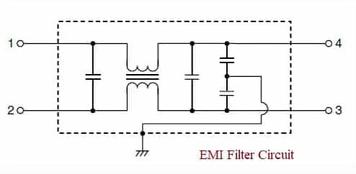STP Cable: Advantages and Disadvantages of Shielded Twisted Pair
Shielded Twisted Pair (STP) is a type of cable commonly used in networking to transmit data signals. STP cables consist of pairs of twisted copper wires encased in a shielding layer, typically made of metal foil or braided wire. This shielding layer helps protect the twisted pairs from electromagnetic interference (EMI) and radio frequency interference (RFI), ensuring the integrity of data transmission.
Let’s delve into the STP cable basics and explore the advantages and disadvantages of STP cable.
What is STP?
Introduction:
- It is one type of twisted pair cable, the other being UTP (Unshielded Twisted Pair).
- It is similar to UTP in that wire pairs are twisted around each other. However, it also features shielding around the cable to protect it from external interference. Here, the shield functions as a ground.
- It combines shielding, cancellation, and wire twisting techniques.
- Each pair of wires is wrapped in metallic foil. The four pairs of wires are wrapped in an overall metallic foil, usually a 150 Ohm cable.
- STP cable reduces electrical noise within the cable and from outside the cable (e.g., EMI, RFI).

- It supports a maximum segment length of about 100 meters.
- It offers a speed or throughput of about 10 to 100 Mbps.
- Media and connector size: Medium to large
- Average cost per node: moderately expensive
Benefits or Advantages of STP
The following are the benefits or advantages of STP:
- Shielding reduces the chance of crosstalk and provides protection from external interference. This shielding helps maintain signal integrity, especially in environments with high levels of electromagnetic interference, such as near heavy machinery or power lines.
- The shielding in STP cables helps reduce signal attenuation, allowing for longer transmission distances compared to UTP cables, especially at higher frequencies.
- The shielding in STP cables also provides some level of security by preventing signal eavesdropping or interception, though this is more relevant in specific security-sensitive applications.
- It offers better electrical characteristics than unshielded cables.
- It can be easily terminated with a modular connector.
- STP cables help to meet compliance with specific EMC or EMI standards due to their shielding.
Drawbacks or Disadvantages of STP
The following are the drawbacks or disadvantages of STP:
- Shielding increases the overall diameter and weight of the cable. This can be a consideration in situations where space or weight constraints are significant factors.
- It is more difficult to install compared to UTP cables. The larger thickness makes them unsuitable for narrow cable ducts.
- It has a higher cost per foot of wire.
- The shield of STP cables must be grounded properly; otherwise, it acts like an antenna and picks up unwanted signals.
Conclusion
Overall, STP cables offer superior protection against electromagnetic interference and better performance in noisy environments compared to UTP cables. However, they come with higher costs and installation complexities. The choice between STP and UTP cables depends on the specific requirements of the network and the environment in which they will be deployed.
Also, refer to the advantages and disadvantages of UTP cable.
 RF
RF


